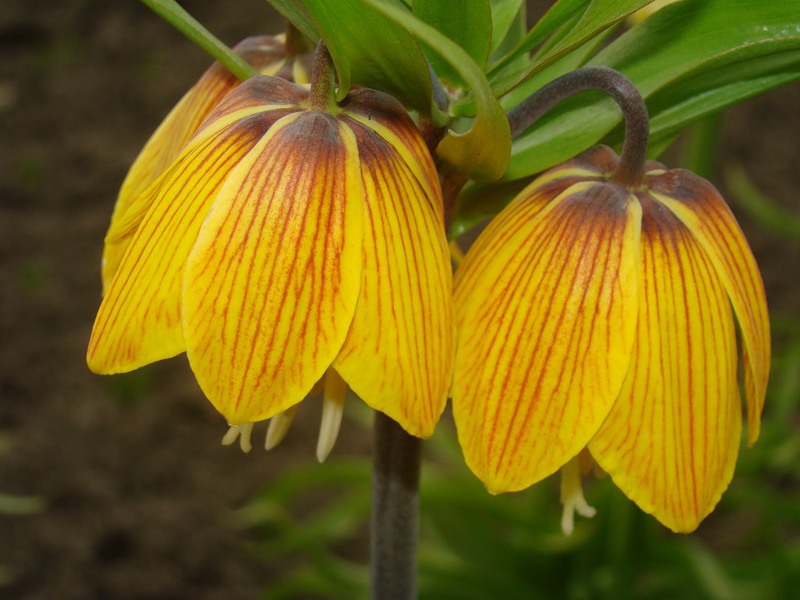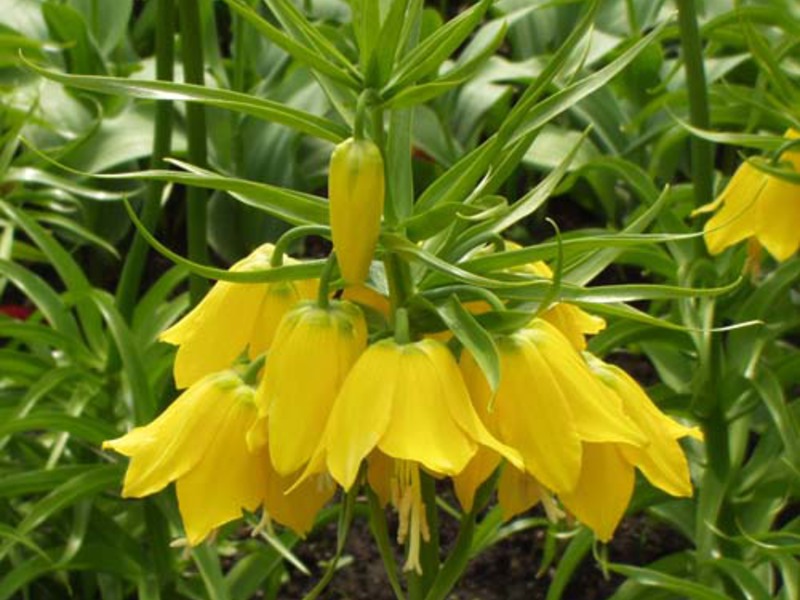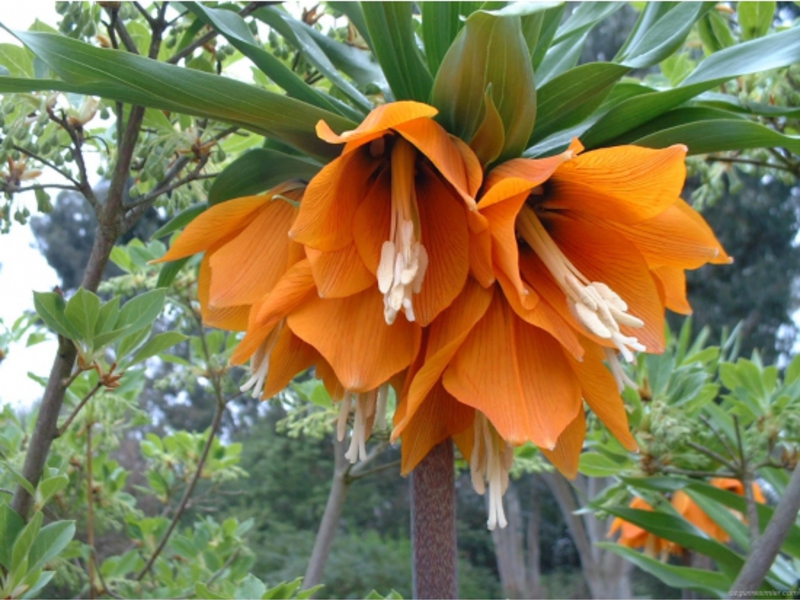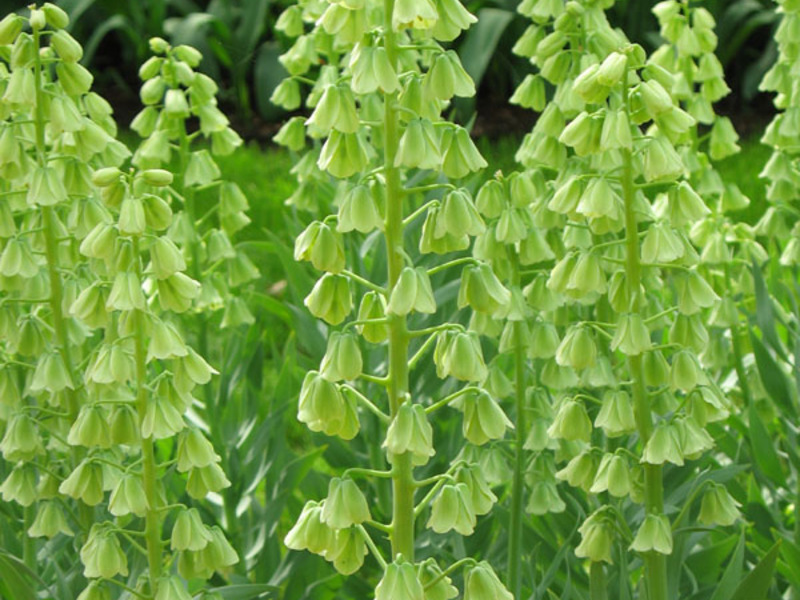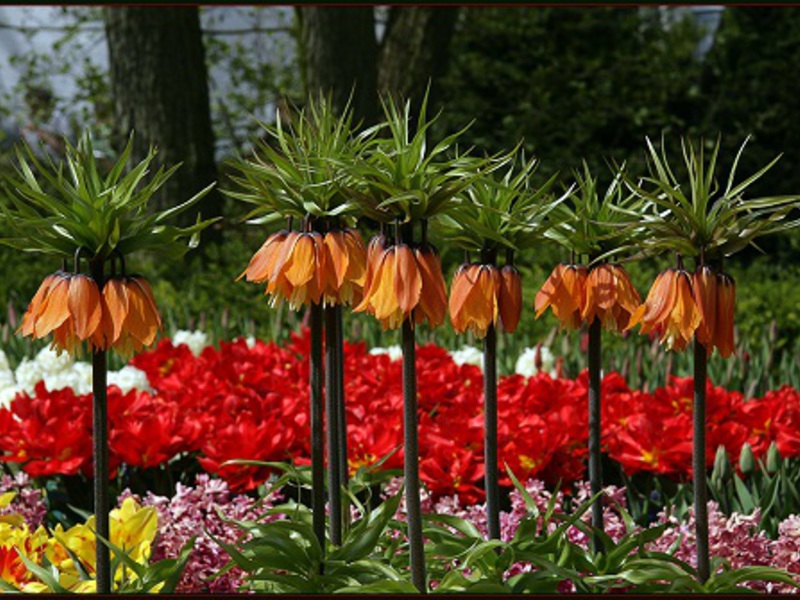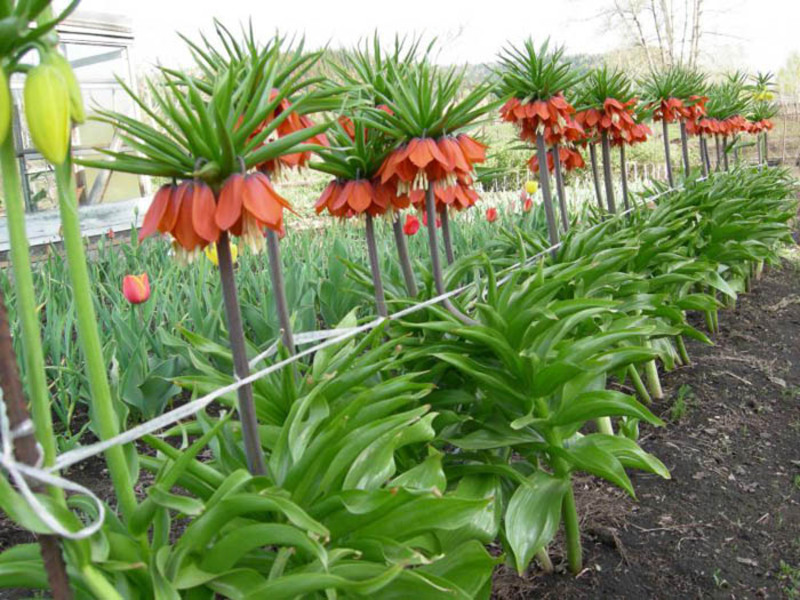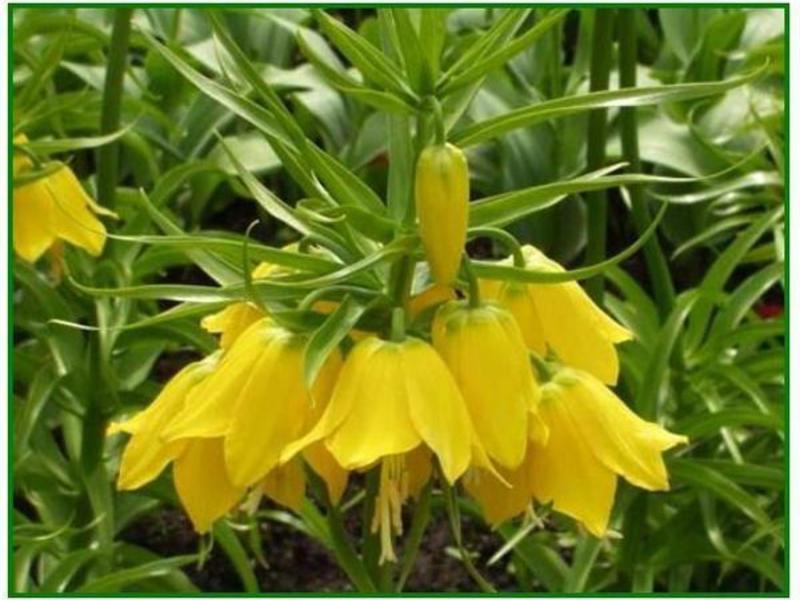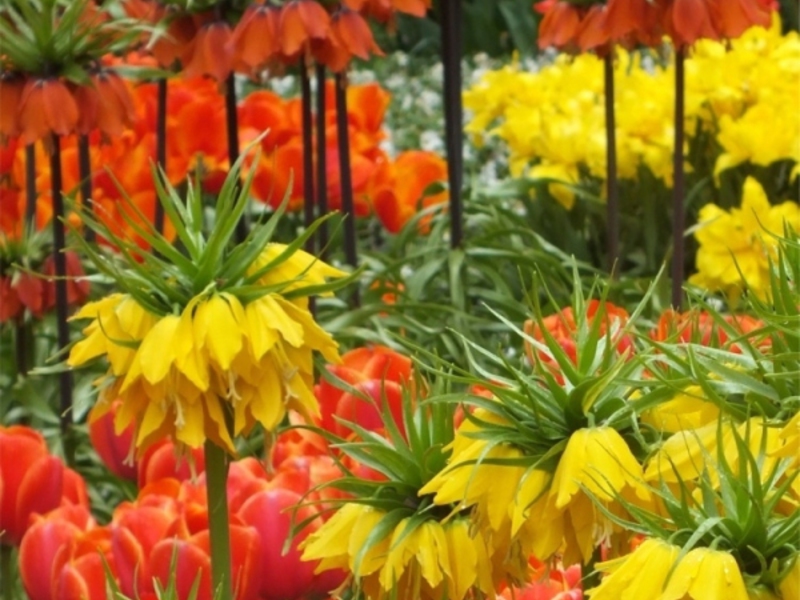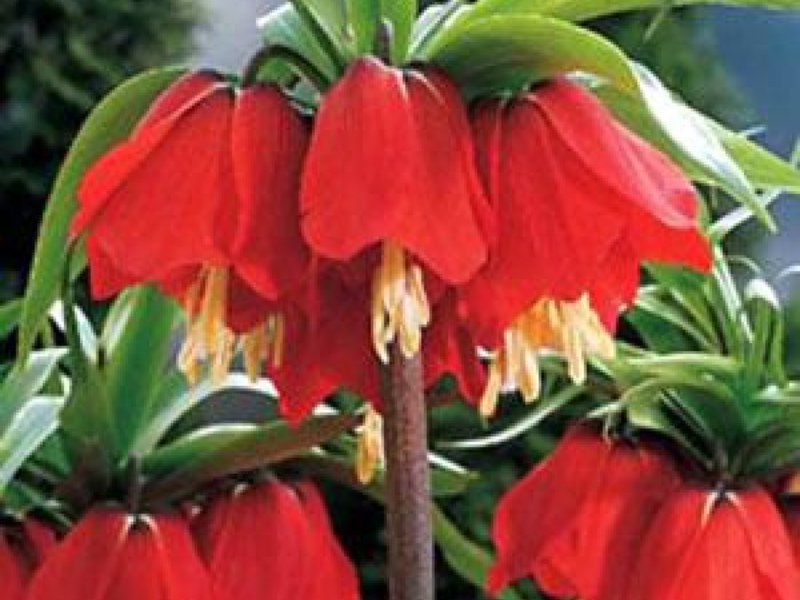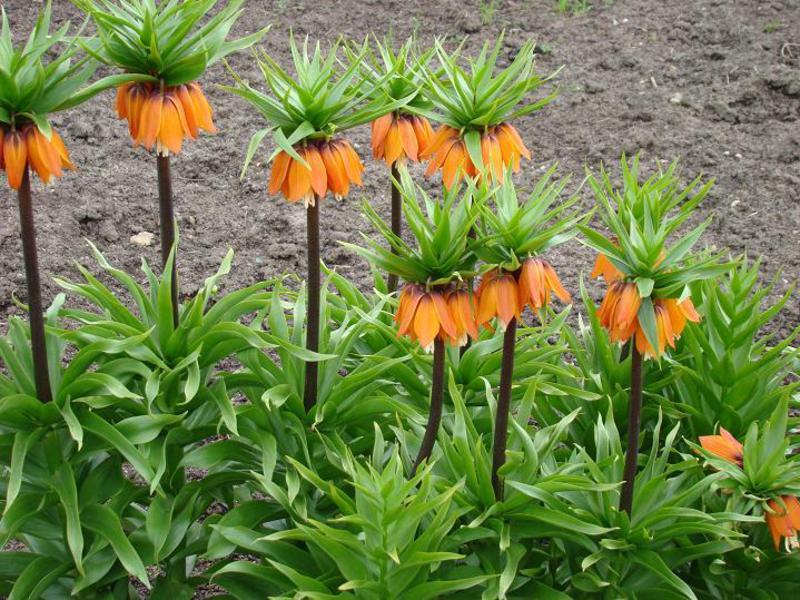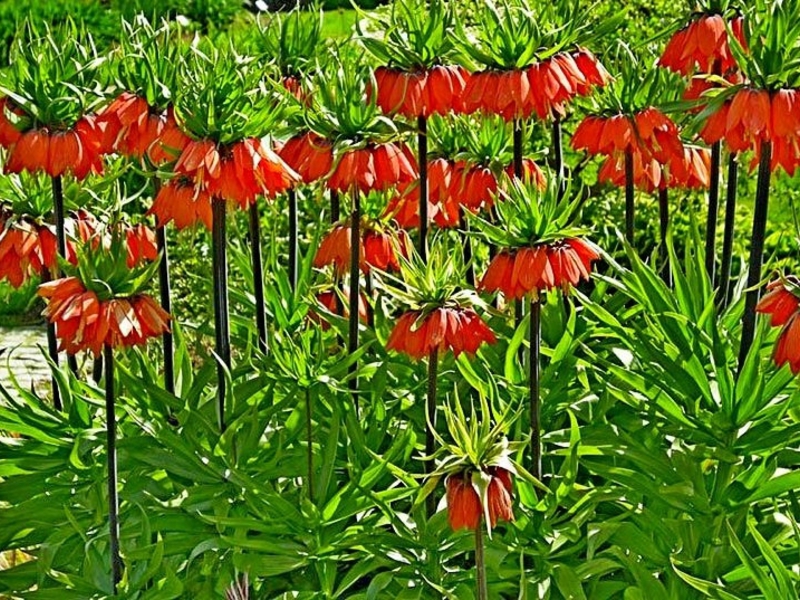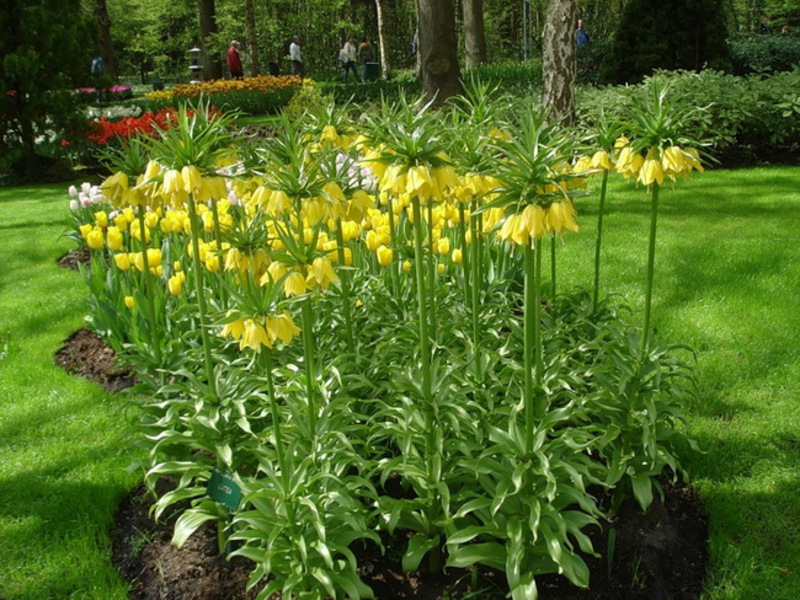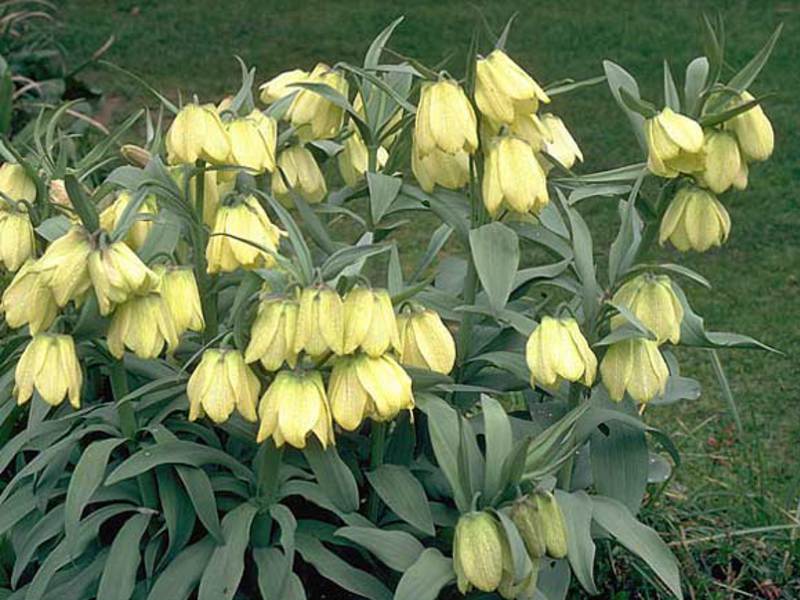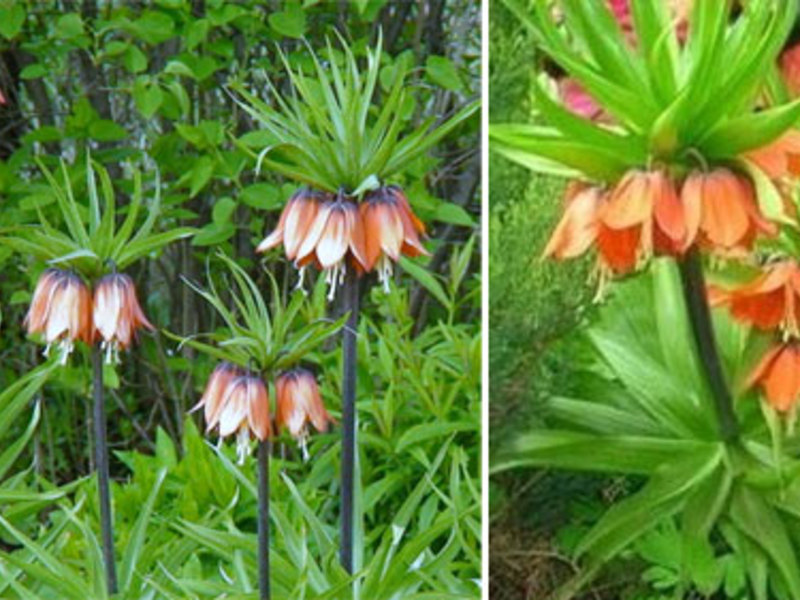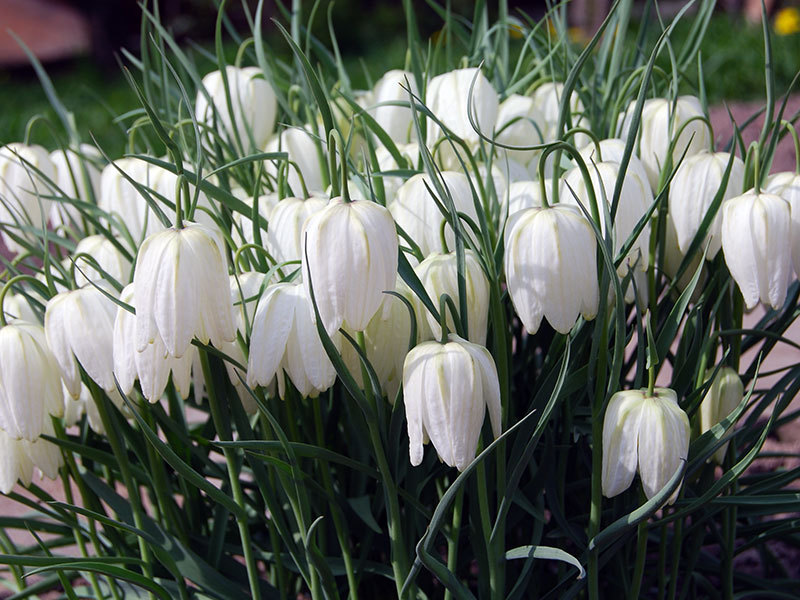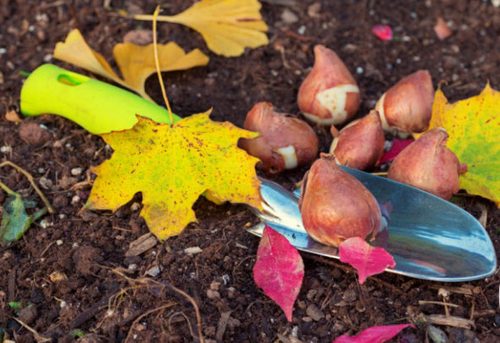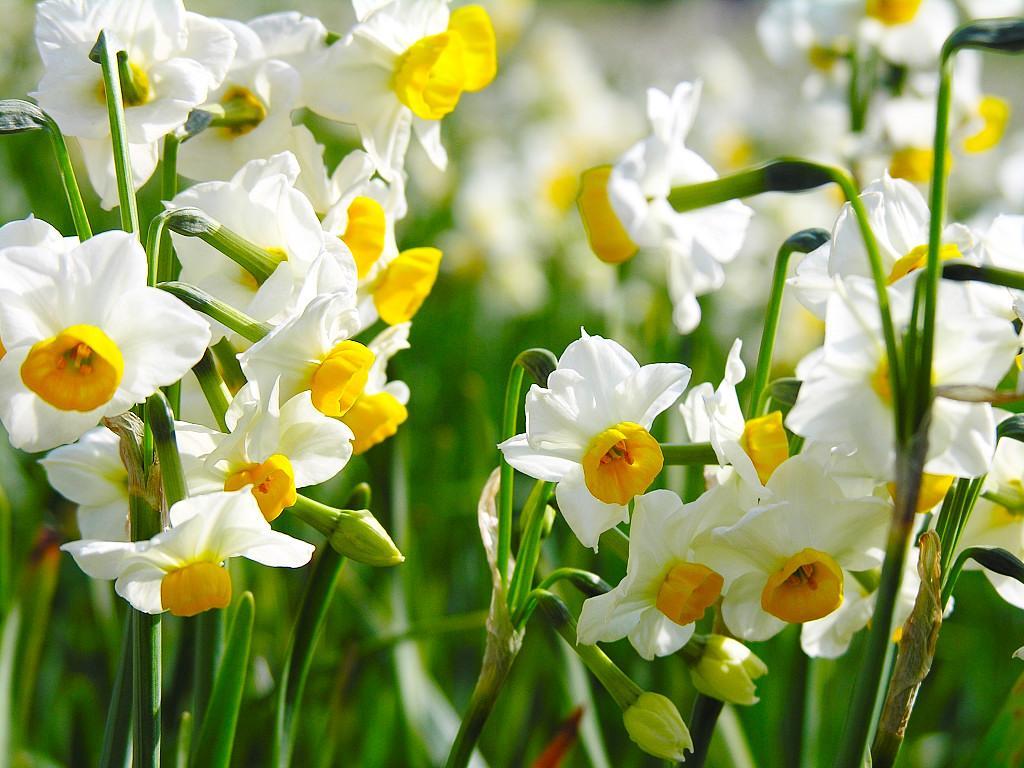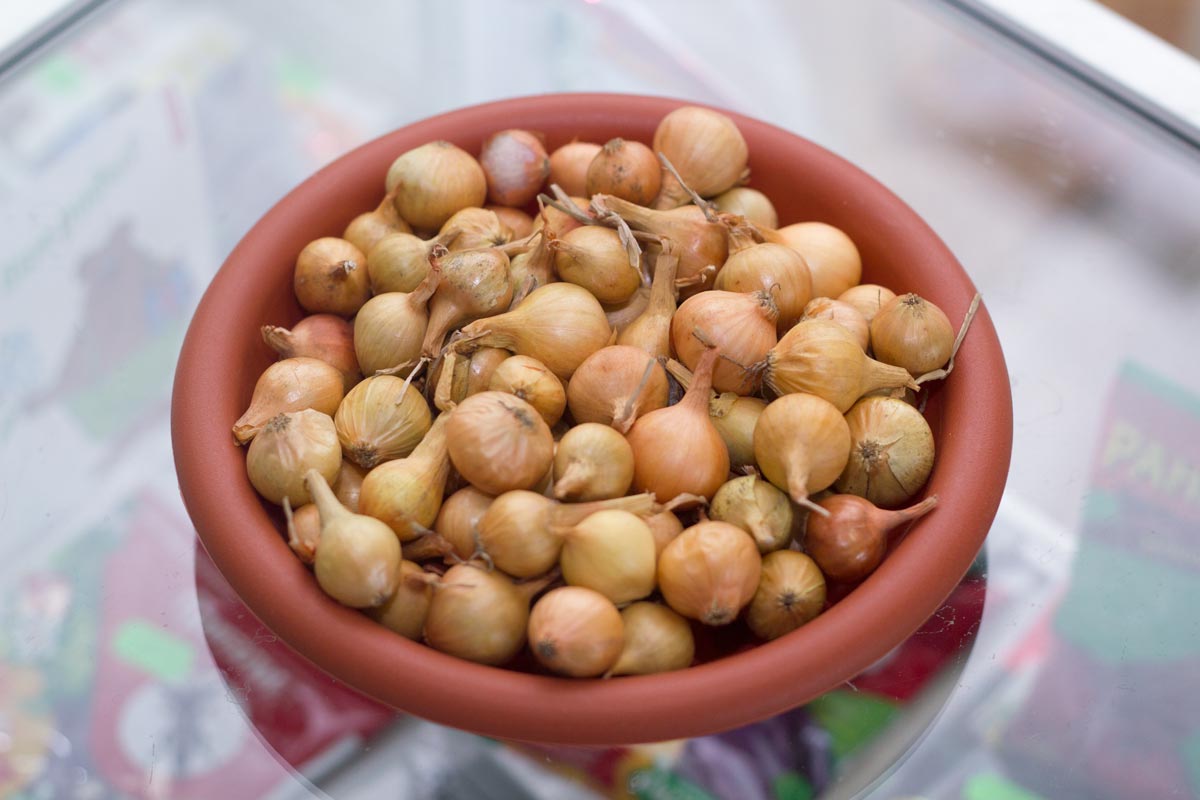With its unearthly beauty and grace, the amazing imperial hazel grouse flower grown in many garden plots admires. The plant attracts gardeners with its extraordinary inflorescences and early and long flowering. Many use it to repel moles and pests living in the soil. The imperial hazel grouse, with proper planting and care, opens its first buds in mid-May. It can be grown not only in the southern regions, but also in the Urals, Siberia and the northern regions of the country.
Content
Grouse imperial: general description, varieties, photos
The bulbous plant of the Liliaceae family is valuable for its amazingly beautiful, bell-like drooping flowers. They form in the axils of the leaves along the tall trunk of the plant. The buds are located in a group of five to seven pieces. Above the stem, above the very buds, the leaf mass continues to grow.
Elongated leaves of hazel grouse have a glossy surface and a rich emerald hue. In some varieties, they are arranged in two rows. The flowers most often have yellow or bright orange petals, but there are varieties with red, pink and white buds.
Breeders have bred more than ten varieties of imperial hazel grouse. For regions with difficult climates the following varieties of imperial hazel grouse are suitable:
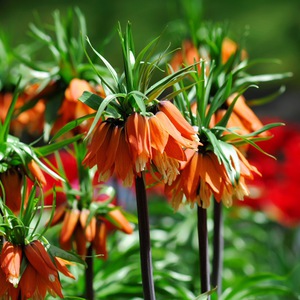 Strip Beauty is a plant with white and cream flowers that bloom very early. Already at the end of April, you can get the first buds if you plant the bulbs for seedlings in February.
Strip Beauty is a plant with white and cream flowers that bloom very early. Already at the end of April, you can get the first buds if you plant the bulbs for seedlings in February.- The variety "Gardand Star" is distinguished by its large inflorescences and is suitable for lovers of orange colors. With regular watering, continuous flowering continues for one and a half months.
- The "Rubra" variety is a plant with a low stem up to 70 cm high. Suitable for planting around the perimeter of the area and for decorating flower beds. Buds up to 6 cm in length are crimson in color with gracefully carved black rulers. The opened flowers reach 4.5 cm in diameter.
- The "Raddeana" variety is a plant up to one and a half meters high. It has a strong ground part and inflorescences consisting of eight buds. Creamy and pale yellow flowers bloom in mid-June when used as seedlings. The variety withstands short-term frosts, which allows it to be planted in open ground in early spring.
Features of planting imperial hazel grouse
To get a beautiful and long-lasting flowering of the imperial hazel grouse, you should prepare for planting in advance.
The choice of planting material
Nowadays, buying bulbs is not a big deal. They are offered at a reasonable price in specialized stores and at flower exhibitions.The flower color of the imperial hazel grouse is mainly limited to orange, yellow and red shades. Therefore, you should not believe the pictures with pink, purple, black or pigeons attached to the bulbs.
When choosing planting material, you should pay attention to its size and quality:
- The bulbs must be at least 4 cm in diameter, otherwise it will be difficult to wait for flowering.
- Grouse bulbs can weigh from 500 g to 1 kg.
- The landing material is a flattened ball with a through hole.
- The bulbs should not be soft or have cracks, mold or rot.
- The presence of roots is allowed on the planting material. Dried last year's shoot is not removed.
Choosing a place and landing dates
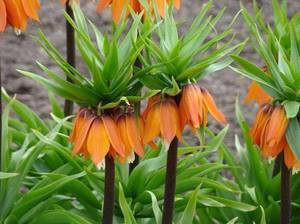 For the successful cultivation and reproduction of hazel grouse in the open field, planting should be carried out to open sunny areas... Imperial hazel grouses will grow well in partial shade. Therefore, they can be planted on the southwestern and western slopes, near the gazebo, terrace and country house, under deciduous shrubs.
For the successful cultivation and reproduction of hazel grouse in the open field, planting should be carried out to open sunny areas... Imperial hazel grouses will grow well in partial shade. Therefore, they can be planted on the southwestern and western slopes, near the gazebo, terrace and country house, under deciduous shrubs.
The site must be protected from the wind, which is capable of breaking tall plant stems. If it is not possible to find such a site, then you can use special props.
Planting bulbs in open ground can be done in two ways:
- If the planting material was stored in a layer of sawdust in the basement, then in the first half of March the plant is planted in large containers under indoor conditions. As soon as the last frost has passed, seedlings with developed stems can be planted in open ground.
- In areas with a mild winter climate, hazel grouses are planted in the fall at the end of September - mid-October. In the future, they will need a shelter from frost, which is provided with film, compost, sawdust. The disadvantage of this method of planting is that with a prolonged spring, partial rotting and damping of the planting material occurs.
How to plant the bulbs correctly?
The hole must be prepared two weeks before planting hazel grouses. Its dimensions should be 40x40 cm in length and width, and the depth of the hole depends on the size of the bulb and averages 30 cm.If a group planting of plants is planned, then the distance between the holes is about 25-30 cm.
After two weeks, sand is poured into the holes, and a peg is inserted into the center of such a length that it rises another 50 cm above ground level. An onion is placed on the sand near the stuck peg and covered with compost-fertilized soil.
Grouse imperial: outdoor care
Plant care begins after the snow cover has melted. It is necessary to immediately remove the winter shelter, otherwise, due to a lack of oxygen, the bulbs may begin to rot. After removing the shelter, the soil is loosened and spilled with a solution of potassium permanganate and mineral fertilizers. You should not be afraid of the last spring frosts, since the flower does not suffer from them.
Watering and feeding
 When caring for bulbous plants, watering is carried out only in dry weather... Otherwise, due to regular waterlogging, the bulbs will begin to rot and the plant will die. To prevent the soil from drying out, you can cover it with mulch.
When caring for bulbous plants, watering is carried out only in dry weather... Otherwise, due to regular waterlogging, the bulbs will begin to rot and the plant will die. To prevent the soil from drying out, you can cover it with mulch.
In a dry summer, it is necessary to water the bushes even after the stems die off. To prevent the bulbs from drying out in the ground, watering twice a month will be enough.
As soon as the threat of frost passes, the hazel grouses are fed with a special fertilizer mixture, which is prepared from the following ingredients:
- humus - 10 liters;
- complex fertilizer for flowering plants - 1 tbsp. the spoon;
- nitrophosphate - 1 tbsp. the spoon.
The prepared mixture with a layer of 3 cm is laid out over the surface of the area where hazel grouses grow. In the initial stage of flowering plants are fed with potash fertilizers and wood ash.
After flowering is complete, superphosphate and potassium sulfate are fed to ensure healthy planting material.
When caring for hazel grouses, it is necessary to regularly remove weeds and carefully loosen the soil so as not to damage the bulbs. When cutting flowers, a part of the leaves must be left on the stem. Otherwise, the bulbs will stop growing.
Breeding methods for hazel grouse
The plant can be propagated in two ways:
- Vegetatively or by dividing the bulbs.
- Seeds.
Dividing the bulbs
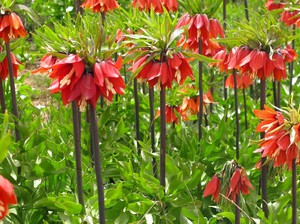 Planting material for children is dug up at the end of June, while the foliage of the plant has not yet completely dried. Most often, during the season, the mother bulb grows and forms one or two baby onions. They will need to be separated and grown over two years.
Planting material for children is dug up at the end of June, while the foliage of the plant has not yet completely dried. Most often, during the season, the mother bulb grows and forms one or two baby onions. They will need to be separated and grown over two years.
Daughter bulbs separate easily. After that they disinfected in a weak solution of potassium permanganate and for two to three weeks are stored in a well-ventilated dry room with an air temperature not exceeding + 30C. During this time, children will give roots and shoots. Since they have no protective scales, they must be handled with extreme care. Make sure that the baby bulbs do not dry out, otherwise they will not germinate.
To help the flower form a baby, the bulbs are dug out after flowering and the healthiest ones are selected. A scraping with a diameter of 2 cm is made on them with a sharp sterile knife.After the wound dries, the planting material placed in dry sand and stored in a dry place. By the end of summer, the bulb with overgrown roots is treated with a fungicidal solution and planted in open ground. So that all the forces of the flower were spent on the formation of children, the ovaries appearing on it are removed.
Seed propagation
The seeds ripened in the dried capsule of the plant are sown in open ground immediately after collection. Since the seedlings of hazel grouse will grow and develop for two years, the soil for them must be nutritious. Planting depth should be about one centimeter. For better drainage, the distance between the plants should be 10x10 cm. On top, the soil is sprinkled with peat in a layer of two centimeters.
The first seedlings will appear only next year. The bulbs are dug up at two years of age and stored in a dry place during the summer. Such storage is a rather laborious process, since some of the planting material can rot... Moisture-resistant varieties of hazel grouse can be grown outdoors for up to four years. During this time, the plant will get stronger and begin to bloom.
Grouse flowers against bears and moles
Experienced gardeners noticed that when planting on the plots of the imperial hazel grouses, the minks of the moles disappeared, and there were fewer bears and other pests. Therefore, the plant began to be planted in potato rows, where it scares off the Colorado potato beetle and wireworm. There is no scientific explanation for this, but it is believed that the hazel grouse bulbs have a certain smell and secrete substances that are harmful to pests.
Why are hazel grouses not blooming?
Bulbous perennials refuse to bloom under the following circumstances:
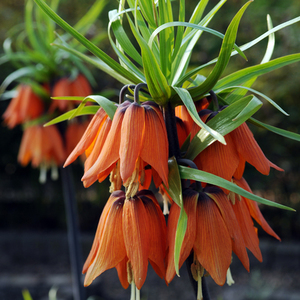 Little snow winter or poor shelter. In this case, the bulbs freeze over. Imperial hazel grouses planted in the fall for the winter should be covered with a layer of peat or humus at least 15 cm thick.
Little snow winter or poor shelter. In this case, the bulbs freeze over. Imperial hazel grouses planted in the fall for the winter should be covered with a layer of peat or humus at least 15 cm thick.- Planting the plant in poor soil. A lot of moisture accumulates in clay soil, and the bulbs begin to rot. Too light soil freezes in winter. Take care of a suitable soil with good drainage.
- Incorrect fit. If the planting material is too deep, then the plant spends all its energy on growth. When planted shallowly, bulbs react to weather changes.
- Small planting material. Bulbs less than 5 cm in diameter will not flower in the first year. They will grow up and build up children.
- Wet and cool summers.Under such weather conditions, the onions must be dug up and heated naturally before planting.
The imperial hazel grouse looks very beautiful in group plantings. The plant blends well with heiranthus, late blooming daffodils and tulips... When properly planted and cared for, the royal plant will make a unique flower bed in your garden.
